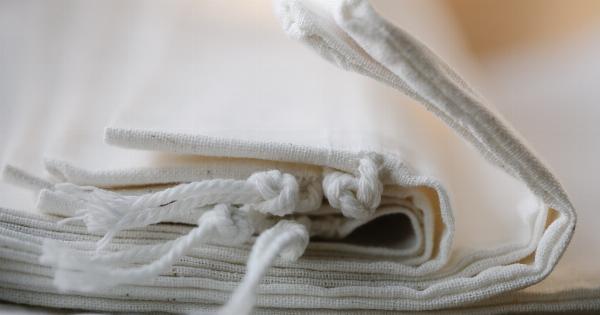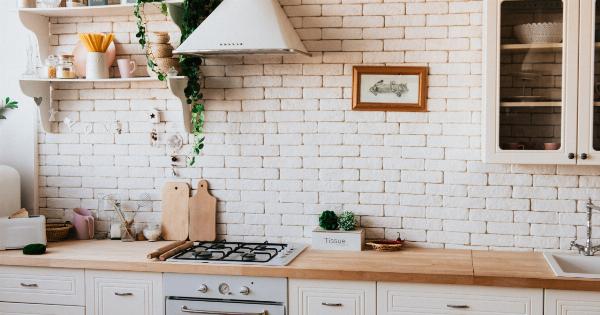High humidity levels can make your home feel uncomfortable and even unbearable at times. Besides the discomfort, high humidity can damage your furniture, walls, and other household items.
High humidity is also a breeding ground for mold and mildew, which can be hazardous to your health. Fortunately, there are quick solutions to reduce the humidity levels in your home.
What Causes High Humidity in Your Home?
Before delving into solutions, it is necessary to identify the causes of high humidity in your home. The common causes of high humidity include:.
- Hot showers without proper ventilation
- Cooking without proper ventilation
- Leaky pipes
- Wet clothes drying indoors
- Poorly ventilated crawl spaces or basements
- Poorly insulated windows and doors
- Inefficient air conditioning
Quick Solutions for High Humidity
Invest in a Dehumidifier
A dehumidifier is an appliance designed to reduce the humidity levels in your home. It works by sucking in the humid air and cooling it to remove the moisture before blowing it back out.
A dehumidifier can reduce the humidity levels in your home by up to 50 percent. Consider investing in a portable or a whole-house dehumidifier to suit your needs and budget.
Use Fans and Ventilation
Fans can help move the moist air out of your home when used in conjunction with proper ventilation.
Open windows and doors when the weather allows, use ventilation fans in the bathroom and kitchen when cooking or showering, and install attic vents to keep the air circulating in your home. Fans and ventilation help to remove dampness and circulate fresh air through your home to reduce humidity levels.
Fix Leaks and Seal Windows and Doors
Leaks in your pipes and roof can allow moisture to seep into your home, increasing the humidity levels. Seal any gaps or cracks around windows, doors, and walls to prevent moisture from entering your home.
You can also add weather stripping to your doors and windows, making them airtight to conserve energy and reduce humidity levels.
Keep Your Indoor Plants under Control
Plants release moisture into the air, which can increase the humidity levels in your home. If you have a few indoor plants, consider relocating them to one room or outdoors.
Alternatively, you can plant them in an enclosed space with adequate ventilation to contain the moisture level.
Use Charcoal
Charcoal has numerous benefits, and reducing humidity is one of them. Charcoal acts as a natural dehumidifier as it absorbs moisture from the air.
Place a few activated charcoal blocks in a bowl and place the bowl in a humid area to reduce moisture levels. Replace the charcoal blocks every few months or when they become saturated.
Fix Your HVAC System
Your heating, ventilation, and air conditioning (HVAC) system may be contributing to high humidity levels in your home. An inefficient air conditioner may not be able to remove enough moisture from the air, leading to high humidity.
Check your HVAC system to ensure that it is functioning adequately and replace your AC filter regularly.
Use Rock Salt
Rock salt is an effective natural solution for reducing humidity in your home. Rock salt works by absorbing moisture from the air. Place a few handfuls of rock salt in net bags or cloth bags and place the bags in humid areas of your home.
Remember to replace the rock salt every few months or when it becomes saturated.
Keep Your Home Clean and Decluttered
A cluttered and dirty home can contribute to high humidity levels. Dirt and dust absorb moisture, and a cluttered home can hinder proper ventilation. Keep your home clean and decluttered to reduce the humidity levels.
Vacuum regularly, dust frequently, and wash your bedding and curtains regularly.
Invest in Moisture-Absorbing Products
Moisture-absorbing products, such as silica gel and desiccants, are designed to absorb excess moisture from the air. Place the moisture-absorbing products in humid areas of your home, such as closets, basements, and cabinets.
Replace the moisture-absorbing products regularly or when they become saturated.
Get Creative with Rice
Rice can be used to reduce humidity levels in your home. Fill a sock or cloth bag with rice and place it in a humid area of your home to absorb moisture from the air. Replace the rice every few months or when it becomes saturated.
Conclusion
High humidity can make your home uncomfortable and cause damage to your household items. Luckily, there are quick and effective solutions to reduce the humidity levels in your home.
You can invest in a dehumidifier, increase ventilation, fix leaks, seal doors and windows, use charcoal, fix your HVAC system, keep your home clean and decluttered, invest in moisture-absorbing products, and use rice to control humidity levels. By implementing these solutions, you can enjoy a comfortable and healthy home with low humidity levels.





























